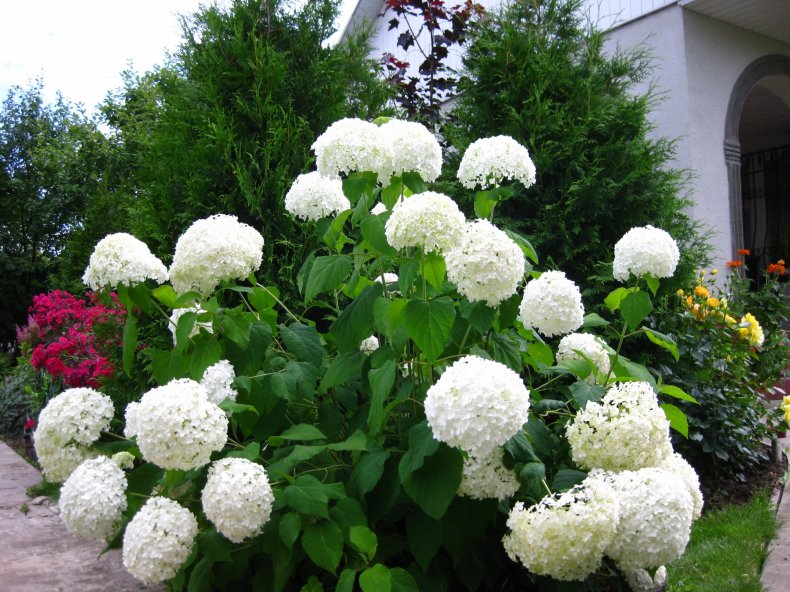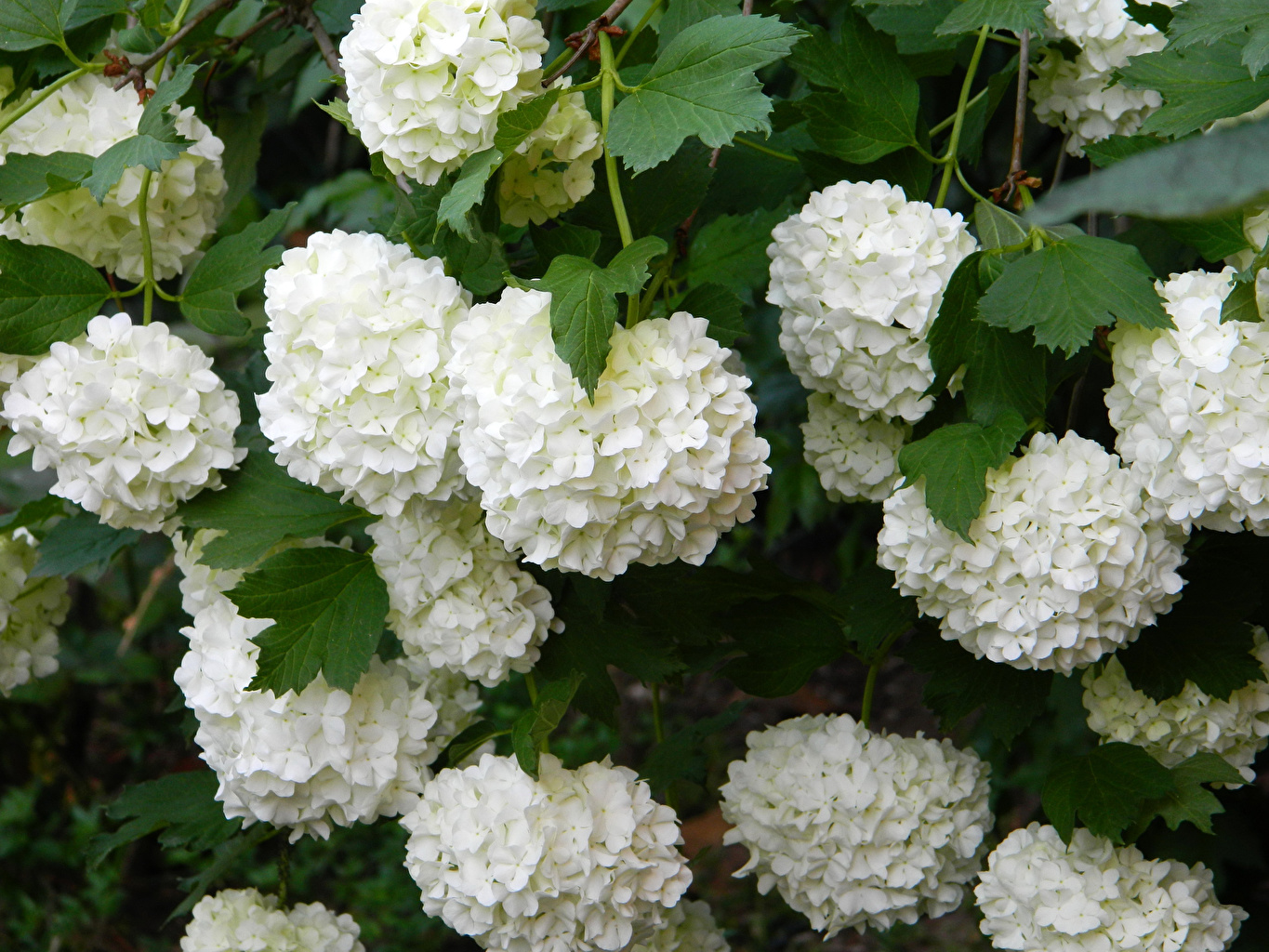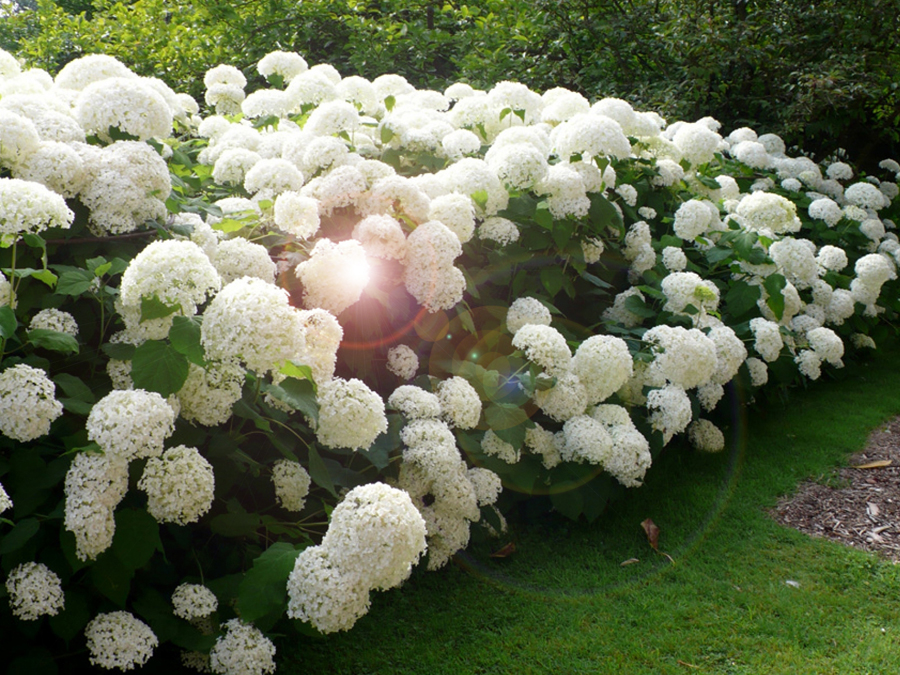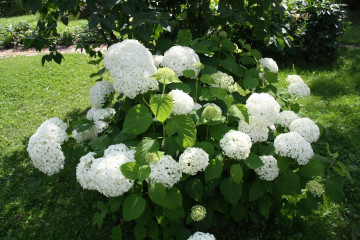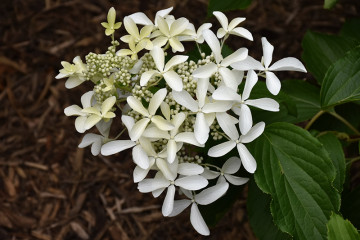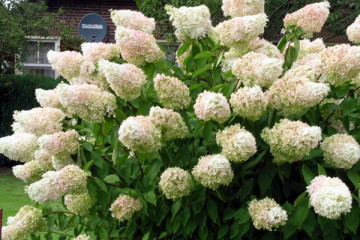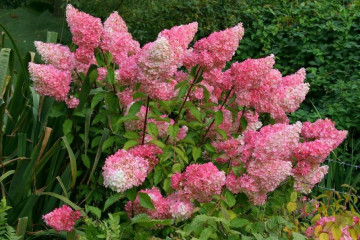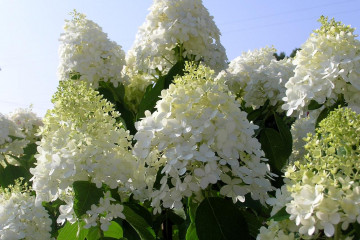Hydrangea Incredibl treelike (Incrediball)
Content:
Flowers are a graceful decoration for your yard or garden. But the weather conditions are often unpredictable, so gardeners prefer to plant plants that endure natural phenomena that can destroy attractive flowers overnight. For this reason, they prefer a plant called hydrangea arboreal Inkredibol.
The origin and appearance of the Hydrangea Incredible plant
If earlier hydrangea was found only in its homeland - in America, where it first appeared at the end of the nineteenth century, now almost every second gardener can boast of lush plantings in his garden and garden, in comparison with which other flowers are just a semblance suite.
Description of hydrangea Incredible bloom
Hydrangea Incredible has distinctive features, including:
- straight long branches that do not bend under the weight of large inflorescences;
- massive spherical flowers, thirty centimeters in diameter;
- the bush reaches a height of one and a half meters, or even more;
- frost resistance.
Transplanting hydrangea Incredible after purchase in open ground
If a gardener comes up with the idea of planting hydrangeas in his garden, it is worth thinking about transplanting the plant into open ground, since this is the most common breeding method.
What is needed for landing
It is very important to follow the fundamental rules when working in open ground during the planting process. It must be remembered that hydrangea is very picky about the soil, so you should immediately abandon planting in alkaline soil, and give preference to an environment with moderate acidity. The size of the hole is determined in proportion to the vastness of the root system.
How to choose the best place
Choosing a place is the most important point in planting a plant. Treelike hydrangea incrediball, in the case of being in a warm temperate climate, you can safely plant in the autumn in an area protected from the sun.
Step-by-step planting process
The planting process is an important step. Therefore, every detail of the description should be taken seriously:
- Landing holes are dug in the size of half a meter by half a meter.
- The roots of the seedlings are shortened, the shoots are pruned, only a few buds remain unharmed.
- Before planting, the pit is pre-fertilized with a solid layer of humus, phosphorus-containing nutrients and minerals.
- The root area is located at ground level.
- After planting, before compacting the earth with needles, compost and sawdust, it is recommended to water the soil abundantly.
Reproduction of hydrangea Incredible
Propagation of hydrangeas is one of the most predictable moves of any gardener, as noble flowers create the idea of the owner as a gardener who knows a lot about plants. There are several options for the development of events:
- Propagation by seeds, where you need to plant them in the soil as early as February, when sprouting, the sprouts are separated, and when spring comes, they are planted in open ground.
- Dividing the shrub is another option in which in the spring the plant is divided so that it grows stronger by the fall.
- Reproduction by layering - young shoots are covered with soil, leaving only the top, and the plant that has taken root is separated and transplanted the next year.
Propagation by cuttings
The vegetative method, or propagation by cuttings, is the most affordable of all. The transplant procedure includes the following stages:
- From March to June, several upper shoots are selected, the length of which has reached 15 centimeters.
- Next, a cut is made, with a calculation of 90 degrees.
- Cut shoots are placed in moist soil, pre-treated with agents to stimulate root growth.
Hydrangea Care Incredible
It is important to comply with the conditions for caring for hydrangea.
Watering mode
Watering the plant is an important part of maintenance, as hydrangea is extremely demanding on the availability of moisture. It needs to be watered once every seven days - at least. The increased temperature can damage the plant, so when watering it is important to use cool water, about 20 liters for each bush.
Top dressing
Top dressing is done in three approaches:
- in spring - with compost;
- at the time of bud ripening - with urea and potassium sulfate;
- to increase the flowering season - with mineral preparations.
Features of care during the flowering period
The flowering period is an important stage, therefore, due to the compaction of the soil, it is necessary to systematically loosen it. It doesn't matter where it grows - among a vast number of plants or in splendid isolation - watering must occur constantly.
A very important part is pruning. Neatly trimmed branches will delight the eye and help the plant stay in its original form as long as possible. In no case should the hydrangea be transplanted during the flowering period.
Features of care during the rest period
The winter period is when the plant is dormant. Here you need to remember that, although the plant is considered frost-resistant, it will not be superfluous to insulate the root part. The upper part may freeze, there is nothing terrible here, you should not try to cover it too, in the spring the twigs will instantly grow back and the flowers will again delight with their appearance.
Preparing for winter
Treelike hydrangea - plant of the fifth degree, strong, frost resistance. Already mature plants do not need covering. The same cannot be said about young shoots that have not reached the age of four, which are not ready for changes in the weather. The root zone of young plants must be mulched and the shrub must be covered with spruce branches, a dense, but at the same time, breathable fabric.
At the onset of warming, after wintering, you can safely get rid of the tissue, but in cloudy weather, a plant weaned from the sun's rays can get burned.
Thus, the tree hydrangea is an excellent plant that does not require excessive care. It is frost hardy, which is beneficial for planting in cooler areas.
